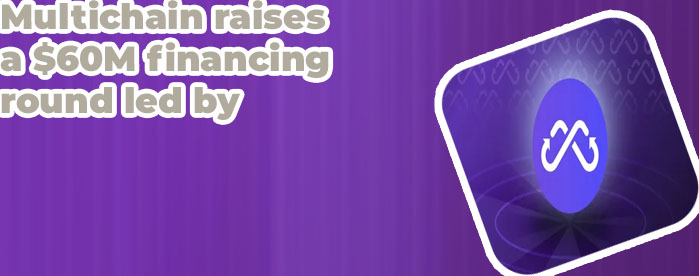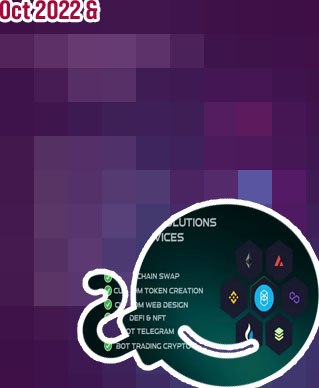
As the popularity of decentralized finance (DeFi) grows, the need for efficient cross-chain communication becomes imperative. In this article, we explore the concept of multichain systems, specifically focusing on Ethereum smart chain avalanche with a total value locked of 60 million. These articles provide insightful information on how these protocols work, their benefits, and how they can enhance the DeFi ecosystem.
Understanding Multichain Systems: A Comprehensive Guide

In today's era of interconnected digital assets, understanding multichain systems is key to navigating the complex world of blockchain technology. "Understanding Multichain Systems: A Comprehensive Guide" provides readers with a thorough examination of this important topic, offering expert insights and practical advice for implementing and utilizing multichain systems effectively.
This comprehensive guide delves into the intricacies of multichain systems, exploring their potential applications across various industries. From finance to supply chain management, multichain systems have the power to revolutionize the way we interact with data and assets. By grasping the fundamentals of multichain technology, readers can stay ahead of the curve and harness the full potential of this groundbreaking innovation.
Key topics covered in the book include:
- An overview of blockchain technology and its evolution
- The advantages of multichain systems over traditional single-chain networks
- Case studies highlighting successful implementations of multichain technology
- Practical tips for integrating multichain systems into existing infrastructure
- A glimpse into the future of multichain systems and their potential impact on the global economy
Exploring Ethereum Smart Chain: Features and Use Cases
In the fast-paced world of cryptocurrency, Ethereum has long been a popular choice for developers and investors alike. However, with the recent surge in popularity of decentralized finance (DeFi) applications, many are turning to alternatives like Ethereum Smart Chain (BSC) to take advantage of lower fees and faster transaction times.
One of the key features that sets BSC apart from Ethereum is its compatibility with the Ethereum Virtual Machine (EVM), allowing developers to easily port their Ethereum-based projects over to BSC. This has led to a thriving ecosystem of decentralized applications (dApps) on the BSC network, offering users a wide range of options for trading, lending, and more.
In addition to its technical capabilities, BSC also boasts a high level of security and decentralization, thanks to its network of validators and consensus mechanism. This has helped to build trust among users, who can rest assured that their funds are safe and transactions are secure.
Overall, BSC offers a compelling alternative to Ethereum for those looking to explore the world of DeFi. Its features and use cases make it a strong contender in the ever-evolving landscape of blockchain technology, providing opportunities for developers and users alike to participate in this exciting new frontier. Whether you're a seasoned cryptocurrency enthusiast or just getting started,
Avalanche Protocol: Revolutionizing Cross-Chain Communication
In the world of blockchain technology, interoperability between different chains has long been a challenge. However, with the emergence of Avalanche Protocol, a revolutionary solution has been introduced to address this issue. Avalanche Protocol uses a unique consensus mechanism called Avalanche consensus, which allows for high throughput and low latency, making it ideal for cross-chain communication.
One of the key features of Avalanche Protocol is its subnets, which enable the creation of separate chains that can interact with each other. This allows for the seamless transfer of assets and data between different chains, opening up a world of possibilities for decentralized applications and smart contracts. Additionally, Avalanche Protocol's platform is highly scalable, capable of handling thousands of transactions per second, making it one of the fastest consensus protocols in the market.
Moreover, Avalanche Protocol also boasts high security, thanks to its use of validators and staking mechanisms. By incentivizing participants to act honestly, Avalanche Protocol ensures the integrity of the network and prevents any malicious behavior. This combination of speed, scalability, and security makes Avalanche Protocol a game-changer in the world of cross-chain communication.
In conclusion, Avalanche Protocol is set to revolutionize cross-chain communication by providing a fast, secure, and scalable solution for interoperability between different blockchain networks. Its innovative features and robust technology make it
Unlocking the Potential of 60 Million TVL in DeFi with Multichain Integration
As decentralized finance (DeFi) continues to gain momentum in the financial sector, the integration of multiple blockchains holds immense potential for further growth and innovation. With over 60 million total value locked (TVL) across various DeFi platforms, the implications of multichain integration cannot be overstated.
By allowing interoperability between different blockchains, DeFi projects can tap into a larger pool of liquidity and resources, leading to increased efficiency, scalability, and user accessibility. This is particularly important in the context of DeFi, where speed and cost-effectiveness are paramount.
Furthermore, multichain integration can help mitigate the risks associated with blockchain congestion and network fees. By spreading transactions across multiple blockchains, DeFi platforms can ensure smooth operations and better user experience.
In order to fully realize the potential of multichain integration in DeFi, it is essential to consider factors such as security, decentralization, and cross-chain compatibility. Ensuring robust security measures and maintaining decentralization are crucial for building trust and confidence among users. Additionally, compatibility between different blockchains is key to enabling seamless cross-chain transactions and communication.
